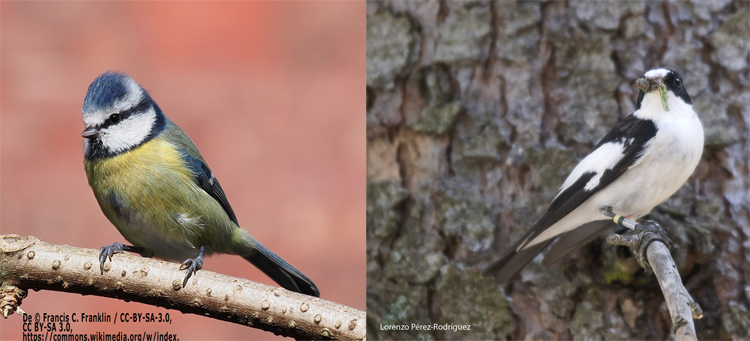The adjustment to climate change and the differential effects of temperature on resident and migratory birds were studied using the start dates of the laying in ten long-term studies in nest-boxes in Europe with data on at least one species of resident tit ??and one species of migratory flycatcher. Resident tit populations advanced their breeding more strongly in relation to temperature increases than migratory flycatchers. The divergence was strongest in the lower latitudes where the interval between tits and flycatchers is smaller and winter conditions are more favourable for residents. The phenological adjustment of flycatchers to climate change seems to be progressively further hampered by competition with resident species. The differential effect of climate change on groups of species with superimposed reproductive ecology affects the phenological interval between them, impinging on interspecific interactions. informacion[at]ebd.csic.es Samplonius et al. (2018) Phenological sensitivity to climate change is higher in resident than in migrant bird populations among European cavity breeders; Global Change Biol https://doi.org/10.1111/gcb.14160
https://onlinelibrary.wiley.com/doi/epdf/10.1111/gcb.14160  Latest News
Latest News
 Las altas temperaturas están provocando que las lagunas y las marismas de Doñana pierdan agua rápidamente
Las altas temperaturas están provocando que las lagunas y las marismas de Doñana pierdan agua rápidamente
La superficie inundada en la marisma es de un 78% pero la profundidad es escasa. Por otra parte, sólo el 1,9% de las lagunas temporales están inundadas. Las precipitaciones crean una oportunidad...
 Traffic noise causes lifelong harm to baby birds
Traffic noise causes lifelong harm to baby birds
A study with CSIC participation reveals for the first time that car noise harms individuals throughout their lifetime even years after exposure
 Illegal wildlife trade, a serious problem for biodiversity and human health
Illegal wildlife trade, a serious problem for biodiversity and human health
A research team led by the Doñana BIological Station and the University Pablo de Olavide have detected wild-caught pets in 95% of the localities in the Neotropic and warns of the risk of zoonotic...
 Urbanization and loss of woody vegetation are changing key traits of arthropod communities
Urbanization and loss of woody vegetation are changing key traits of arthropod communities
Urbanization is favouring smaller beetle species and larger spider species with greater dispersal capacity.
The loss of woody areas is linked to a decline in the duration of the activity...
The loss of woody areas is linked to a decline in the duration of the activity...
 Blood lead levels in an endangered vulture species decreased following restrictions on hunting practices
Blood lead levels in an endangered vulture species decreased following restrictions on hunting practices
Canarian Egyptian vulture was on the verge of extinction at the end of the 20th century. At that time, studies revealed that lead poisoning was a serious problem for the population’s survival. The...
— 5 Items per Page
 Asset Publisher
Asset Publisher
Back






